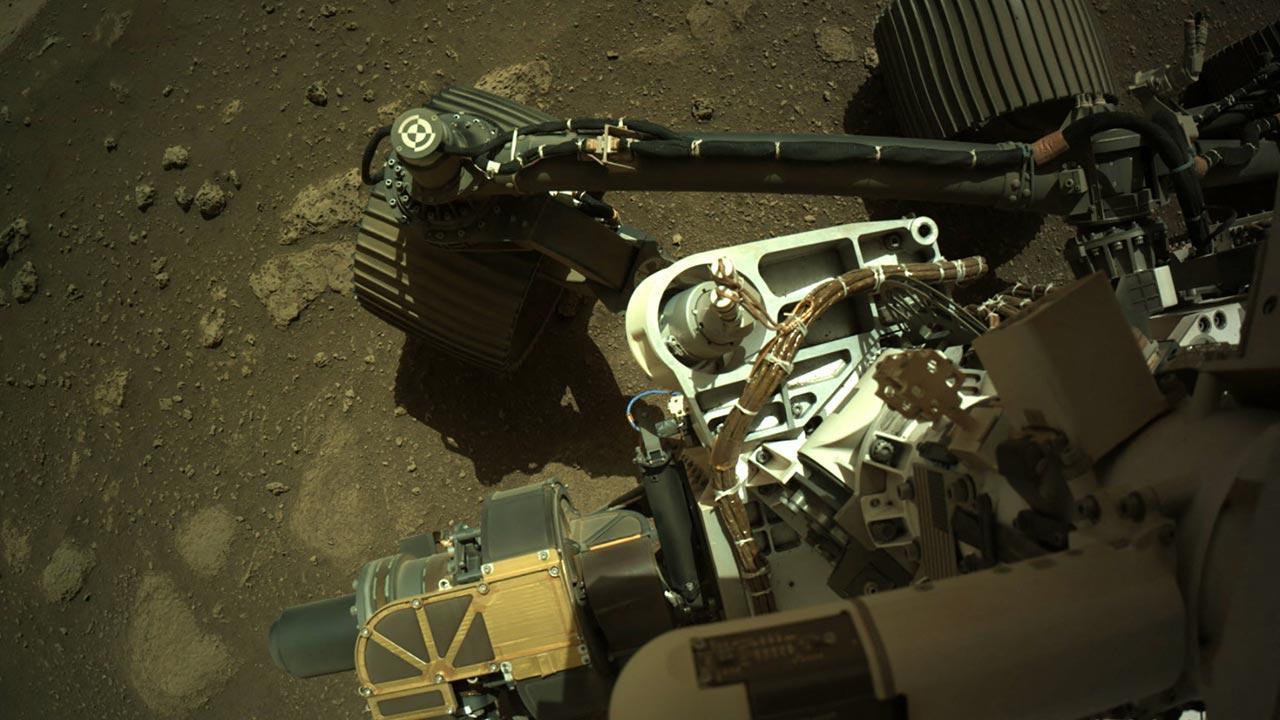"A bad burst of radiation can badly wreck the sensitive electronics of a modern processor," according to the report. Perseverance has two computing modules, and one is a backup in case something goes wrong.

NASA's Mars Perseverance rover. Pic/AFP
If you think that NASA's $2.7 billion Mars Perseverance rover is carrying some state-of-the-art chip to sustain the rough atmosphere and send the data back home from the Red Planet, you are wrong as the most advanced rover runs on a chip used in the 1998 Apple iMacs.
ADVERTISEMENT
This is because an advanced chip is actually a detriment to the unique operating conditions of Mars, reports New Scientist. Mars' atmosphere offers far less protection from harmful radiation and charged particles than Earth's atmosphere.
"A bad burst of radiation can badly wreck the sensitive electronics of a modern processor," according to the report. Perseverance has two computing modules, and one is a backup in case something goes wrong.
The rover houses a PowerPC 750 single-core, 233MHz processor with just 10.4 million transistors that powered the original Mac launched in 1998. Even affordable smartphones today have more than 1,000 times as many transistors.
Late Steve Jobs had reduced Apple's large product lines immediately upon becoming its interim CEO in 1997. The company announced the iMac on May 6, 1998 and began shipping the iMac G3 on August 15 in the same year. It's the same processor that NASA also uses in its Curiosity rover.
The 200MHz clock speed in the chip is 10 times faster than the older rovers, and with 2GB of flash memory, it offers eight times the storage, reports The Verge. Perseverance also has 256MB of RAM.
Last month, NASA had successfully landed the Perseverance rover in a deep crater near Mars' equator called Jezero.
The six-wheeled vehicle will now spend at least the next two years drilling into the local rocks, looking for evidence of past life.
Jezero is thought to have held a giant lake billions of years ago. And where there's been water, there's the possibility there might also have been life.
This story has been sourced from a third party syndicated feed, agencies. Mid-day accepts no responsibility or liability for its dependability, trustworthiness, reliability and data of the text. Mid-day management/mid-day.com reserves the sole right to alter, delete or remove (without notice) the content in its absolute discretion for any reason whatsoever
 Subscribe today by clicking the link and stay updated with the latest news!" Click here!
Subscribe today by clicking the link and stay updated with the latest news!" Click here!






